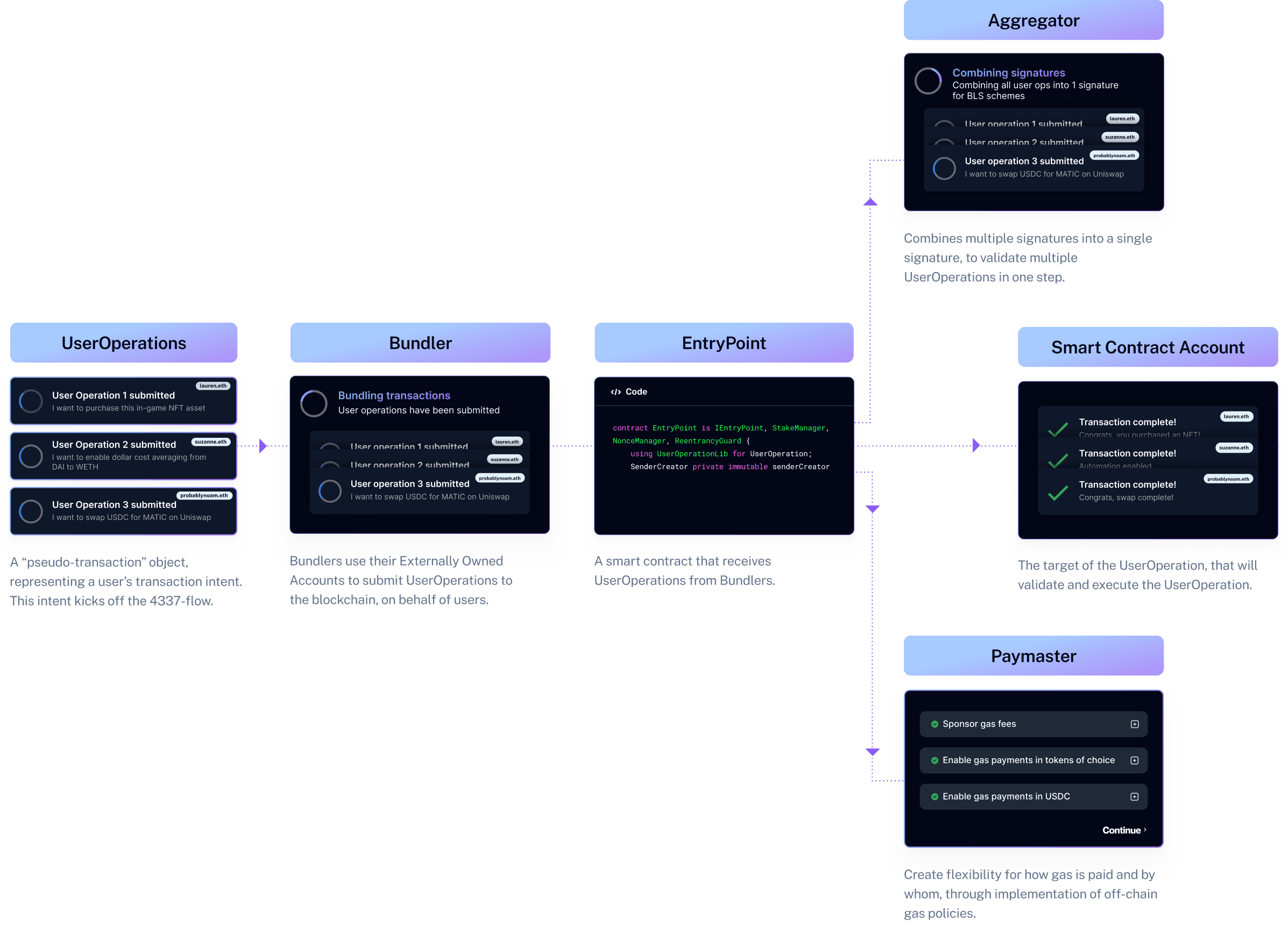
Understanding Account Abstraction
Whether you're an Account Abstraction newbie or already a total expert, we have what you need to keep growing.
How ERC-4337 supports Account Abstraction

Built by thought leaders in Account Abstraction

Embedded Accounts Open Beta
Make wallets invisible. Introducing simple, non-custodial accounts to onboard users and transact with web2 UX.

Hello, Modular Account
Modular Account provides enterprise-grade security, best in class cost, and robust account extensibility to developers building on Ethereum L2s.

Introducing AA SDK v3.0
Meet the most feature-complete developer kit for builders creating apps and wallets compatible with ERC-4337 on Ethereum and Layer 2 blockchains.

What you can build with
Account Abstraction
Self-custody without a seed phrase. No need to hold native crypto tokens. Frictionless login.
Alternative signature schemes. Scheduled transfers. Reblancing portfolios. Dollar-cost-averaging.
Scheduled, sponsor, and batch transactions. ERC-20 and stablecoin gas payments.
Authentication and authorization schemes. Improved security access, such as 2FA. Multi-signature requirements. Account recovery mechanisms. Guarding approvals.

Start building
Your vertically integrated development stack for account abstraction.

Plug-n-play embedded wallets
Make wallets invisible. Simple, non-custodial accounts to onboard users and transact with web2 UX.

Sponsor gas, boost transactions
Get users to your magic moment faster by removing the biggest barrier with gas sponsorship.
Code preview
import { smartAccountClient } from "./smartAccountClient.ts";
// Send a sponsored UO from your smart account like this:
const { hash } = await smartAccountClient.sendUserOperation({
target: "0xTargetAddress",
data: "0xCallData",
value: 0n, // value in bigint or leave undefined
});View docs
Explore API references, tutorials, and guides.
A plug and play solution for simple, non-custodial accounts. Onboard users with either a smart account or an EOA!
Apply ERC-4337 compliant gas payment policies on your dapps' contracts. Remove barriers to access, drive growth and make dapp onboarding actually easy.
ERC-4337 compliant Bundler Services will enable dapps and wallets to submit batches of transactions to Smart Contract Accounts in a single request.
Your go-to guides to accelerate your learning
Read technical deep dives from Alchemy engineers and research analysts.
Frequently Asked Questions
Definitions and explanations of key concepts.

Build blockchain magic
Alchemy combines the most powerful web3 developer products and tools with resources, community and legendary support.